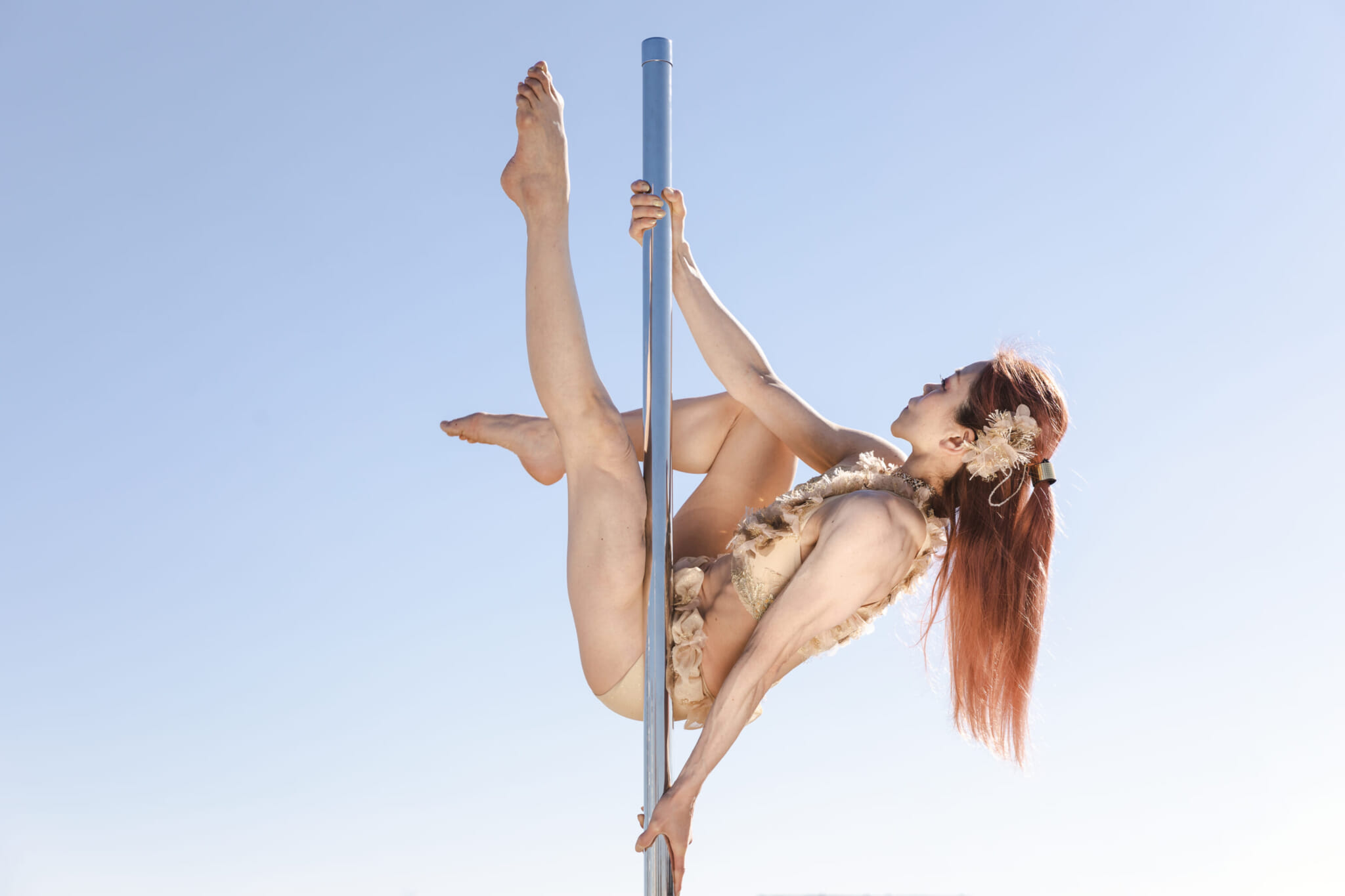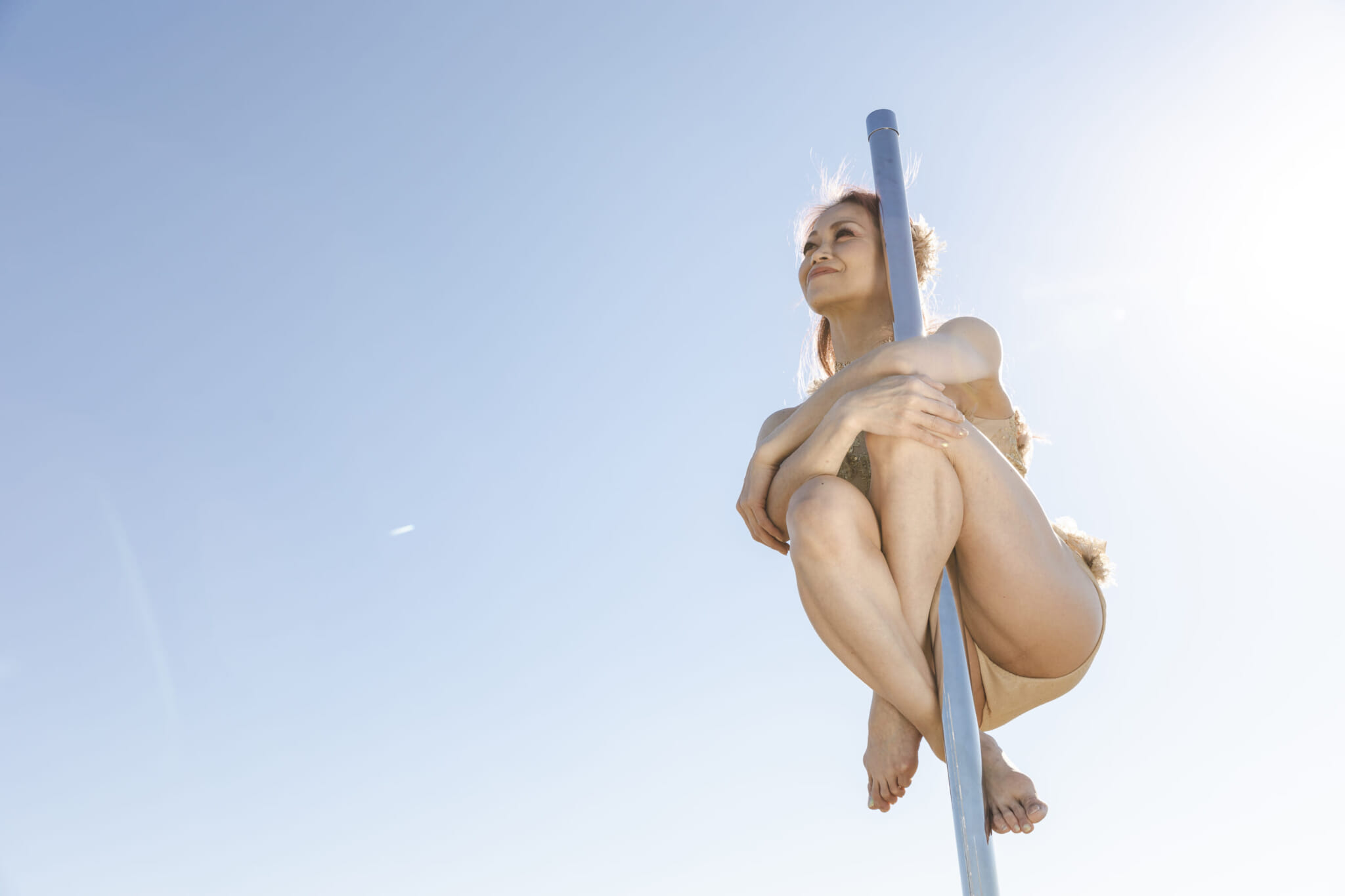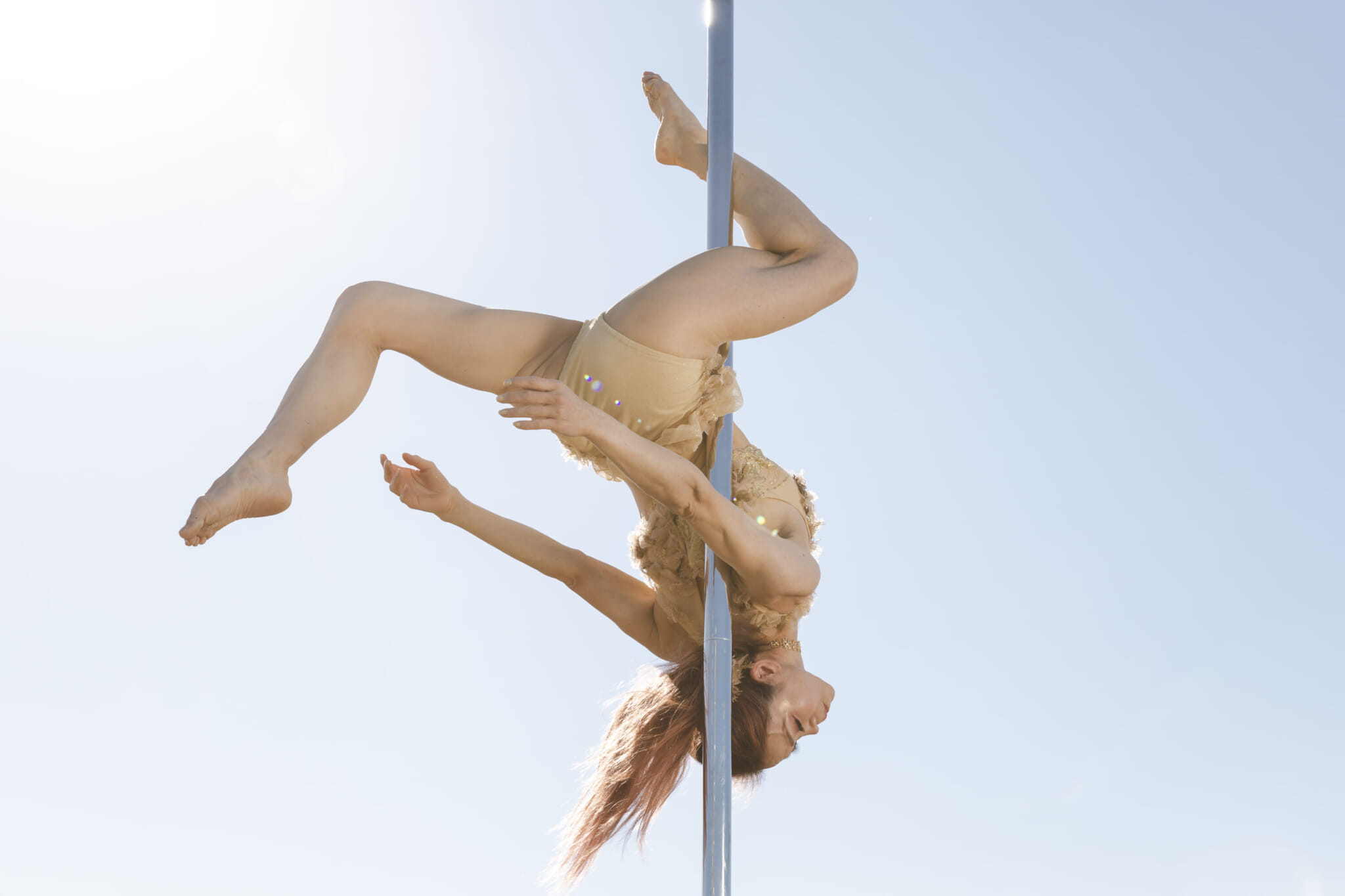Naoyo Takaoka, who goes by Naoyo, is in full lesson mode, encouraging a student trying to flip upside down on a pole then dashing over to another student who managed the flip but is stuck in midair. Naoyo crouches, spotting the student so they feel comfortable enough to pull into the next move. “Up, up we go!” she cheers.
Then she’s off, the petite 50-year-old owner of N Poledance skipping from student to student to ensure each feels supported and confident they won’t drop from a pole headfirst onto the wooden floor below.
Naoyo and I sit down for a talk in her studio after the lesson, chatting over bottled green tea.
Since opening N Poledance in Kawasaki, Kanagawa Prefecture, just over three years ago, Naoyo has built a diverse roster of students ranging in age from eight to 64. Husbands and wives, mothers and daughters, housewives in their 60s, train drivers in their 20s — there is no set mold. Everyone is welcome.

The varied student body may come as a surprise to some, and Naoyo knows only too well the stereotypes associated with pole dancing — she held them once herself, and refused to join a trial session when invited by a friend back in 2009. “My only idea of pole dancing was tied to strippers and the world of erotica,” she explains. But the friend was persistent, and eventually, the pair attended a class. Naoyo was hooked: “I signed up there and then.”
She wants to share her passion and let potential pole enthusiasts know that, no matter their age, gender or body type, there’s a place for them in the world of pole dancing. N Poledance, which she opened in 2019, is her vehicle for doing just that.
Breaking Stereotypes
The floors are warm wood, and the studio is located on the ground floor. This is deliberate. “Most studios are hidden,” she tells me, explaining that they’re often in basements or on the second floor or higher. But N Poledance is different. “It’s bright! And open!” she says. This helps to dispel any erroneous preconceived ideas about the dance form.
Naoyo has another important method for making students feel comfortable: “It’s just me,” she explains. “I greet and teach each and every student who comes through these doors. We’re all connected. We’re like a family, able to provide support and cheer each other on.”
Social media also helps illustrate the inclusivity that can come with pole dancing. Naoyo posts pictures of her beginner class doing handstands against the wall and has videos of herself pole dancing in a pink character costume, climbing to the top of the pole as it spins her around. “It’s not about being famous,” she says, explaining that it’s about highlighting different aspects of the art form.

The Sooner, The Better
The studio’s website emphasizes Naoyo’s philosophy: “No matter your age or physical condition, pole dancing is for everyone.” She receives queries from potential students worried they’re too old or don’t have enough dancing experience. Some tell her they’ll sign up after they’ve lost weight. As someone who worked long and hard to get where she is, overcoming multiple setbacks along the way, she knows that it’s never too late. But she also shares an important truth: “Now,” she says, “is the youngest you’ll be.”
Regardless of what life stage her students are at, she wants them to believe in their abilities and recognize the value that they can bring to dancing. Being older, in fact, comes with its own benefits. “When you’re younger, you can do all the moves,” Naoyo explains. “But as you get older, you can express yourself more deeply.”
Music-wise, pole dancing is wide-open and welcoming of diverse tastes. To reflect this, Naoyo chooses a new song to choreograph each month. She is happy to consider requests — one elementary school student asked for the popular children’s song “Mawaru Sora Usagi.” She chooses a new theme each time too. For example, Gloria Gaynor’s “I Will Survive” was paired with a power theme.
Family Atmosphere
The studio recently held its biannual concert, with students linking up in teams of three or four to perform dance routines to songs of their choice. Dancers posed on poles alone or together to the accompaniment of music including the latest song by K-pop group Blackpink.
The individuality of students was equally on display in team makeup and costume choices. Some wore over-the-top makeup and others had matching outfits, some handmade. The supportive environment Naoyo has worked hard to foster shone through with each cheer and whoop from the audience.
In addition to providing students the chance to show off their skills, these concerts also offer an opportunity for Naoyo and her students to come together as a community. Even former students return. “One student got married, moved to Saitama and had a baby — they came!” Naoyo says, grinning. “I feel like her baby is my grandchild.”

The benefits being reaped by this diverse student body go beyond the creation of a supportive family-like community, however. Students have shared with Naoyo how pole dancing has helped them in other areas of their lives too. “One student lost over 10 kilograms!” Naoyo shares. Others have expressed that their sleep quality and energy levels have improved.
As the studio enters its fourth year, Naoyo is grateful for what she has achieved. She’s not ready to rest on her laurels quite yet, though. Determined as ever to share her passion for pole dancing with others, she plans to keep spinning and flipping — and teaching anyone keen to learn — for the foreseeable future. “I’m not finished yet!” she laughs.
Naoyo and her students are set to appear in “The Show Must Go On,” a theatrical performance combining pole dancing with acting.









